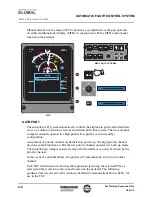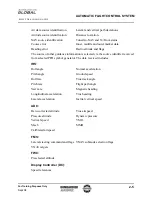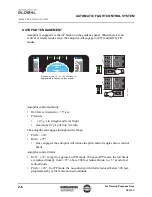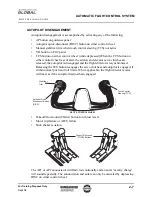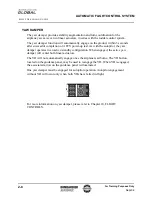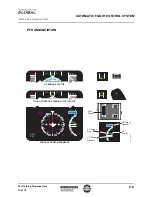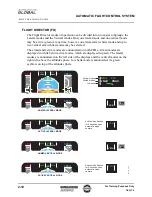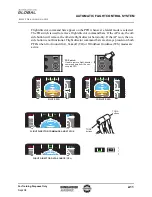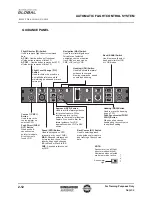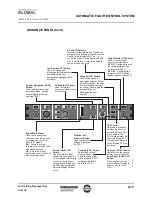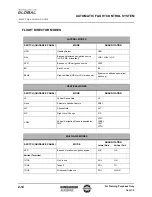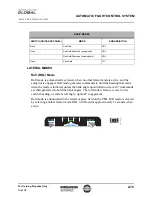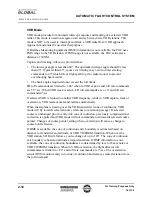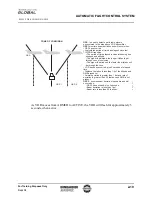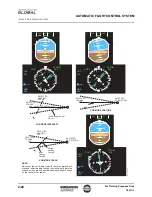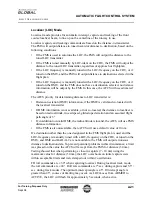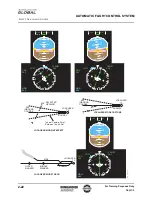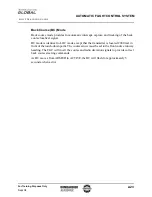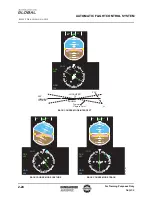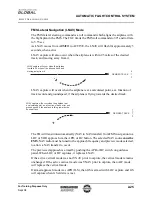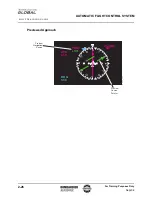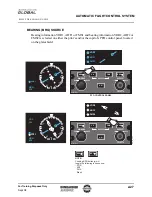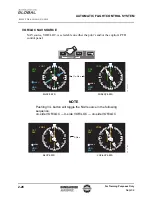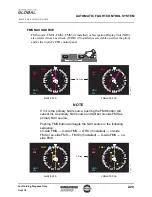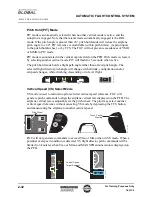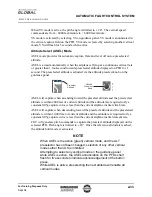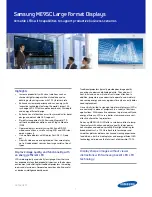
P I L O T T R A I N I N G G U I D E
AUTOMATIC FLIGHT CONTROL SYSTEM
2-18
For Training Purposes Only
Sept 04
VOR Mode
VOR mode provides for automatic intercept, capture and tracking of a selected VOR
radial. This mode is used to navigate on an airway between two VOR stations. This
mode is NOT to be used to intercept and track a VOR radial for a VOR approach.
Approach mode must be used for that purpose.
If Distance Measuring Equipment (DME) information is not available, the FGC uses
FMS range to the VOR station. If FMS range is not available, the FGC estimates a
distance of 30 NM.
Capture and tracking will occur, provided that:
•
The intercept angle is less than 60°. The optimum intercept angle should be less
than 45°. If greater than 45°, course cut limiting may occur to limit steering
commands to 45° which forces flight path to get to radial sooner to prevent
overshooting beam center
•
The bank angles required do not exceed the roll limits
FD roll commands are limited to ± 24° when in VOR capture and roll rate commands
are 5.5°/sec. When VOR track is active, FD roll commands are ± 14° and roll rate
commands 4°/sec.
If selected VOR is retuned to another VOR frequency, while in VOR capture, track or
overstation, VOR mode cancels and rearms automatically.
When the airplane is passing over the VOR transmitter (cone of confusion), VOR
mode will fly towards selected course reference (overstation passage). If selected
course is unchanged prior to entry into cone of confusion, previously computed wind
correction is applied and VOR mode will not command a turn towards selected course
pointer. Changes of course pointer setting when overstation will cause a change in
course hold reference.
If DME is available, the cone of confusion entry boundary is estimated based on
distance to transmitter and altitude, or VOR TO/FROM transition. When over the
VOR station, VOR will follow a course change of up to 120°. The cone of confusion
exit boundary is based on altitude, airspeed and time. If DME information is not
available, the cone of confusion boundaries are determined by level of beam noise or
VOR TO/FROM transition. When in VOR overstation, the flight director roll
commands are limited to ± 24° and roll rate commands are 7°/sec. The overstation
sensor (OSS) monitors entry into zone of confusion and removes radio deviation from
the roll command.

